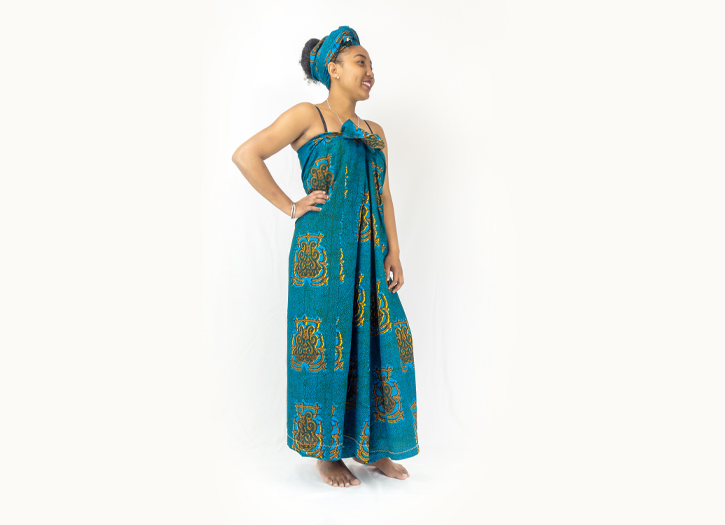A lamba is the traditional garment worn by men and women that live in Madagascar. The textile, highly emblematic of Malagasy culture, consists of a rectangular length of cloth wrapped around the body. Traditional lambas used for burial were often made of silk and cow hides while those for daily wear were more often made of raffia, pig skin, cotton or bast. They could range in color from a tie-dyed mess or solid white cloth, to striped red, white and black cloth found in most parts of the island, the geometric patterns in unique shades of green and brown produced by a handful of Sakalava villages.oday, it is common to find printed cotton or rayon lambas produced in India for the Malagasy market.
The term lamba is the name in the Highlands dialect of the woven cloth that traditionally formed the essential article of clothing throughout Madagascar. This garment is known by other words in various regions where other dialects are spoken; in some parts of the east, for instance, the garment is known by the word simbo.Many of the ways in which the cloth may be wrapped around the wearer are specified by a wide variety of terms that vary from region to region.
Among some ethnic groups, lambas were also traditionally exchanged between a man and woman as part of their engagement ceremony, or as diplomatic gifts, as demonstrated by the two detailed silk lambaakotofahana (one multicolored, the other white-on-white) given in 1886 to President Grover Cleveland by Queen Ranavalona III on display at the Smithsonian National Museum of African Art.There are numerous types of lambas produced in Madagascar. The names can serve to distinguish the material used, pattern type, ritual purpose of the garment or the intended wearer. Names of lambas vary from one region to the next according to local dialects, so the list below is not exhaustive but rather representative of some of the most commonly distinguishable types of lamba. It is many types in Madagascar.
A printed cotton lamba typically featuring a proverb on the lower border of the design, identical to the kangas worn throughout eastern Africa. The lambahoany is presently the most commonly worn type of lamba. These are traditionally made of printed cotton featuring a repeated border design that encloses either a secondary pattern (often around a central medallion) or a large image depicting a pastoral scene from daily life.
The style of wearing the lamba likewise varies between regions and according to the gender of the wearer. Both sexes will wrap it around the waist, much like a sarong. Women will also wear it wrapped over or beneath the bust to form a sheath dress, often with matching lamba headdress. These styles can be paired with a tank top or other light shirt.Men may drape the lamba over one shoulder as a shawl over shorts or – in cooler weather – over a malabary, a long-sleeved, knee-length cotton tunic.







Add Comment